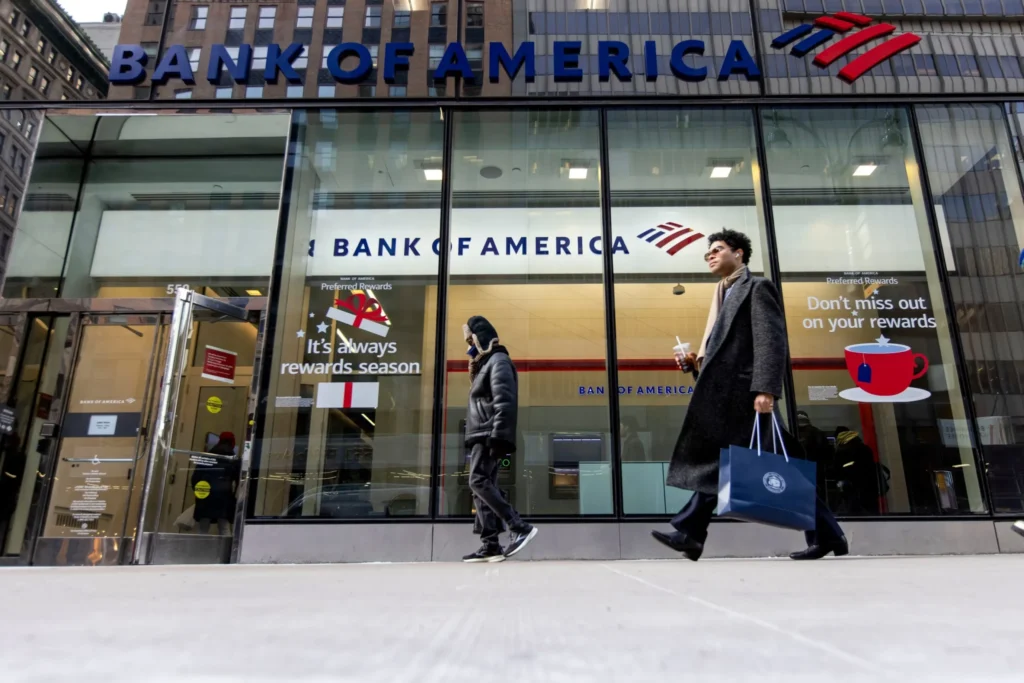Wall Street Giants Move In: Top Banks Rush to Control Bitcoin
When you hear “Top Banks Rush to Control Bitcoin,” it’s not just another crypto headline — it’s a serious shift in the way America’s financial giants are approaching digital assets. JPMorgan, Goldman Sachs, and a roster of other heavyweight U.S. banks are no longer sitting on the sidelines. They’re stepping in, setting up trading desks, custody services, and investment products that look suspiciously like an attempt to take the steering wheel of the Bitcoin economy.
Some might call it inevitable. Others, a takeover. Either way, the balance of power in the crypto space could be about to change.
Top Banks Rush to Control Bitcoin: Why Wall Street Suddenly Cares So Much About Bitcoin
For years, Bitcoin was dismissed in big-bank boardrooms as too volatile, too risky, and frankly — too much trouble. Fast forward to now, and the narrative has flipped.
Institutional demand is surging, regulations are slowly (and unevenly) taking shape, and Bitcoin’s market cap sits in the trillions. This isn’t just some niche asset anymore — it’s a global financial player.
Reports from industry trackers indicate that JPMorgan has quietly expanded its crypto trading desk, while Goldman Sachs is offering derivatives tied to Bitcoin for select clients. Bank of America, Citigroup, and Morgan Stanley are also reportedly deepening their involvement.

Credit from : Fortune
Some of these moves mirror strategies outlined in sources like Coinpedia and CryptoRank, which highlight banks forming partnerships with crypto-native firms to speed up entry into the market.
Top Banks Rush to Control Bitcoin – Or Just Serve Clients?
Here’s the million-dollar question: are these banks actually trying to control Bitcoin, or are they simply meeting customer demand?
The answer might be both. On one hand, providing custody and trading services for high-net-worth clients is a no-brainer — there’s money to be made in fees, and wealthy investors don’t want to manage their own private keys.
On the other hand, once a few big banks dominate the infrastructure for Bitcoin trading, they could shape how — and maybe even when — large volumes of BTC move in the market. That’s a subtle form of control, even if it’s not outright ownership.
Industry analysts cited by CoinStats have even suggested that Wall Street’s growing influence could “institutionalize” Bitcoin to the point where its original peer-to-peer ethos is diluted.

Credit from : The Conversation
The Strategic Playbook: From Custody to Influence
Let’s be honest — big banks rarely make a move without thinking five steps ahead. The strategy seems to be unfolding in stages:
- Custody Services – Offer secure storage for BTC and other crypto assets. For many institutions, this is the entry point, as custody is both a high-demand service and a trust-building move.
- Derivatives & Structured Products – Bitcoin futures, options, and ETFs give banks a way to tap into trading activity without direct spot exposure.
- Liquidity & Market-Making – Once they control large pools of BTC liquidity, they can influence spreads and availability.
- Integration with Traditional Portfolios – Position Bitcoin as a standard alternative asset class, sitting alongside equities and bonds.

Credit from : Acleda Bank
Sounds familiar? That’s because it’s the same playbook used in other markets — commodities, forex, even mortgage-backed securities.
How This Could Reshape the Bitcoin Market
If banks end up controlling most of the infrastructure for large-scale BTC trading, it could mean:
- Less Volatility (Maybe) – Big institutions prefer stability, so they might dampen extreme price swings… although some argue they might also engineer volatility when it suits them.
- More Regulation – Banks operate under strict oversight, so Bitcoin markets could become more transparent — or more constrained, depending on your view.
- Higher Barriers for Retail – If custody and liquidity are dominated by a few institutions, retail traders might find fewer low-cost, direct-access options.
Still, some crypto purists see this as the start of Bitcoin becoming “just another Wall Street asset,” rather than a revolutionary financial alternative.

Credit from : Regtechtime
Why Now?
Timing matters. The recent approval of multiple spot Bitcoin ETFs in the U.S., combined with a bullish trend in crypto markets, has made Bitcoin more “respectable” in the eyes of traditional finance. Plus, with interest rates stabilizing, banks are searching for new growth areas.
There’s also competitive pressure — no bank wants to be the last one to offer Bitcoin services when its rivals are already pitching them to clients. In that sense, it’s a bit of a gold rush — except the gold is digital, and the miners wear tailored suits.

Credit from : UNESCO
The Road Ahead: Cooperation or Control?
Perhaps the more intriguing question is what happens if — or when — these big banks start collaborating directly with major crypto exchanges and blockchain infrastructure firms. Partnerships could streamline settlement, improve liquidity, and boost institutional adoption.
But the flipside is centralization. If too much BTC is parked in bank-controlled custody accounts, Bitcoin’s distribution could become dangerously concentrated. And that’s a far cry from Satoshi Nakamoto’s original vision.
Final Thoughts – Top Banks Rush to Control Bitcoin, But Who Really Wins?
At this stage, it’s hard to tell if Wall Street’s rapid pivot into Bitcoin is good news or a warning sign. Maybe it’s both. Investors could benefit from more secure services, better regulation, and smoother market access. But the trade-off might be ceding some of Bitcoin’s independence to the very institutions it was meant to bypass.
One thing’s for sure — the phrase “Top Banks Rush to Control Bitcoin” isn’t just a catchy headline anymore. It’s a real, unfolding power shift, and whether you’re a casual investor or a hardcore crypto advocate, it’s worth keeping an eye on who’s holding the keys… literally.




